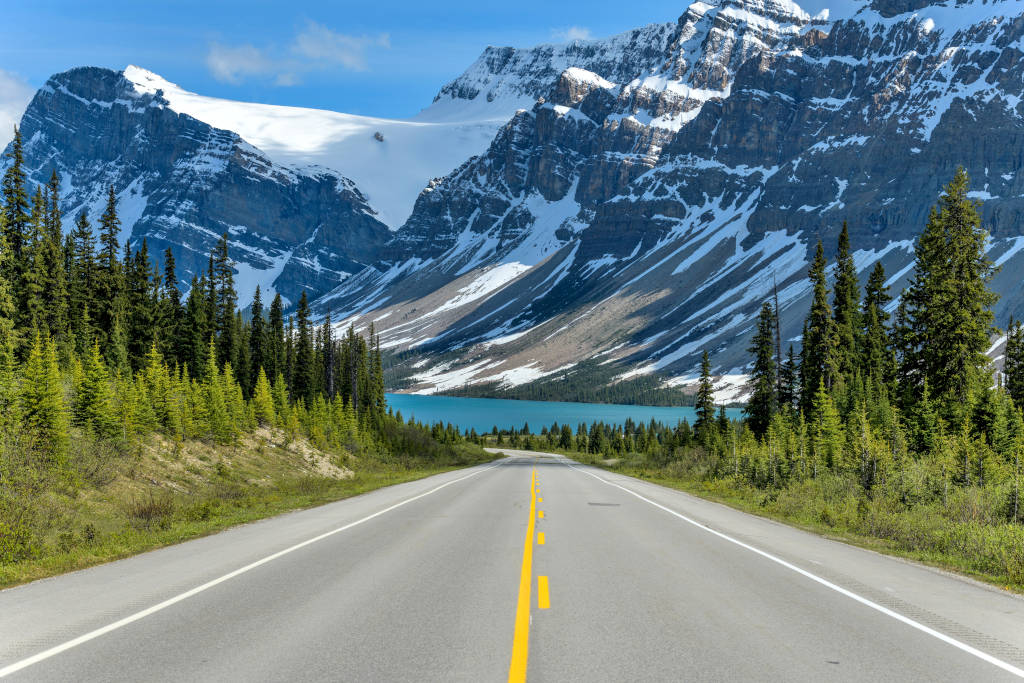Do you have a road trip to Canada in the future? If the answer is yes, or even probably, then it’s a good idea to know how car insurance works in the country. If you’re one of the 13 million Americans that travel to Canada each year, this article will help you with all the info you need to know to have proper coverage on your trip.
We’ll cover the following topics related to operating a motor vehicle in Canada and your auto insurance options when you drive across the border:
- Canadian insurance requirements and ID card
- Information about driving in Canada
- Dealing with car accidents
- Rental coverage
- Public auto insurance
Documents You Need To Drive In Canada
You’ll find that it’s pretty easy to get on the road in Canada if you’re a US resident. This is because as long as you have a valid driver’s license and proof of insurance, you’re good to go in most cases.
Unlike countries such as Mexico, Canada will accept your US auto coverage if you’re traveling by car. This will only be the case if you’re a tourist, though. If you’re planning on being a permanent Canadian resident, you’ll need to purchase a new policy there.
If you’re coming in from another country, you’ll have to get an International Driver’s Permit (IDP). This permit is only valid for one year and is only necessary for people not coming from the US.
What you should bring to Canada from the US:
- Valid US driver’s license (to drive)
- Proof of insurance (to drive)
- Vehicle registration (in case border officials/police ask for it)
- US passport (to get through borders easily)
Canadian Insurance Card
Some insurers offer something called the Canada Non-Resident Inter-Province Motor Vehicle Liability Insurance Card. This often yellow card says that you have the correct level of liability coverage, as per the Canadian Council of Insurance Regulators (CCIR).
To get the yellow card, you’ll have to get in contact with your provider. They’ll also be able to tell you the specific requirements about it. It’s best to do this well in advance of your trip to make sure it’s under your belt before you leave.
Information About Driving in Canada
Driving is pretty much the same on Canadian soil as it is in the US. But some info could be good to know so you can avoid simple hiccups.
When driving, it’s important to know that speeds in Canada are in kilometers per hour (kph), as opposed to miles per hour (mph) in the US. Another thing to watch out for is that road signs can be in both French and English. For example, Quebec is a well-known area with French signs.
Canada Minimum Auto Insurance Requirements
Canadian law requires drivers to have auto insurance, just like in the US. The most standard form of this is liability coverage, which covers bodily injury and property damage.
The Insurance Bureau of Canada (IBC) requires drivers to have a limit of $200,000 of liability coverage in all provinces except for Quebec. In Quebec, the minimum liability limit is $50,000.
If you choose to purchase a Canadian auto insurance policy with any of the coverages listed below, they function much as they do in the United States:
- Liability insurance. This pays for either your own or someone else’s bodily injuries or property damage depending on who’s at fault.
- Collision insurance. Collision covers your car if it’s in a crash with another vehicle or object such as a light pole or tree.
- Comprehensive insurance. Comprehensive covers damage to your car from things like theft, vandalism, and natural disasters.
These are some of the most common types of insurance you’ll see in a Canadian policy. The deciding factor of what’s in your policy is how much coverage you decide to buy. That choice is totally up to you and likely comes down to how much you can afford.
If you’d like to raise your limits to equal Canadian requirements, compare prices from a few US companies to find the best option.
What’s Not Covered?
Your car insurance may or may not cover many situations in Canada, especially if you don’t have full coverage. But one of the most common things claimed are personal items. Even if stored in your car, belongings are usually a part of your homeowners policy.
It’s always smart to know the ins and outs of your auto policy. That’ll help you ensure that you’re getting the coverage you want.
Car Accidents in Canada
Driving in another country requires you to learn some new laws and rules of the road. Unfortunately, accidents do occur and can be even more frequent in other countries. In 2020 alone, there were just over 70,000 collisions across Canada, according to the country’s National Collision Database (NCDB). This is why it’s important to know what to do if you find yourself in an accident while in Canada.
Here are some basic steps to take after you get into a car accident:
- Stop your vehicle safely. If you can, it would also be helpful to get to a shoulder or another safe area, so you don’t block traffic.
- Assess the damage as soon as possible. One of the best ways to look at the damage is to take a photo or video of your car with your smartphone if you have one. That’ll help you collect solid evidence of the damage to your car.
- Gather details. If there happens to be another driver involved, make sure to gather their info such as their phone number, insurer, and their name. You can also try to find and talk to eyewitnesses.
- Contact your insurer. They’ll be able to help you through the aftermath of the accident like filing a claim or which coverage from your policy to apply.
Renting a Car in Canada
You’ll likely want to have the option to travel around the area you’re visiting. Renting a car enables you to do this if you didn’t choose to drive into Canada.
Up north, you’ll see many of the same companies you’d see in the US. For example, Hertz and Enterprise are two well-known companies that operate up north. For this reason, you’ll find your experience renting a car similar to how it works here.
An optional add-on you can buy if you’re renting is a collision damage waiver (CDW). This additional fee protects you if your rental takes damage or gets lost. The price you could end up paying for the CDW can vary. For instance, Enterprise lists its CDW price as being between 9.99 and 39.99 Canadian dollars per day.
Canadian Public Auto Insurance
Some provinces in Canada use something called “public auto insurance.” This means that the government essentially owns the insurer. This is something you may consider researching if you’d like to move to Canada.
You’ll only find public car insurance in the provinces of:
- British Columbia
- Saskatchewan
- Manitoba
- Quebec
People who live in these provinces will only be able to choose from the government-supplied providers. This is different from the rest of Canada, or the US, where consumers can choose a specific company for themselves based on cost, service, or other factors.
Frequently Asked Questions
Can I drive in Canada with my US car policy?
Yes, your US policy and driver’s license will be valid. Be sure to have proof of insurance and a valid license with you at all times on your trip.
What should I do if I want to move to Canada?
If you’re considering becoming a permanent resident in Canada, you’ll have to buy a Canadian policy. Companies such as Intact, Desjardins, and even Allstate are some common options. You may also have to get public auto coverage if you want to move to one of the following provinces:
- British Columbia
- Saskatchewan
- Manitoba
- Quebec
How does car insurance work in Canada?
Canadian car insurance works very similarly to the way it does in the US. Drivers who want to move to Canada will see familiar types of coverage such as liability, collision, and comprehensive. The country also requires a minimum coverage limit, which may vary between provinces.
How different are the rules of the road in Canada than in the US?
The rules of the road are much like the US, with a few exceptions. Some differences include French stop signs (in some places) and the use of kph instead of mph to measure speed.
How do I rent a car in Canada?
Renting a car, like other aspects of driving in Canada, is relatively the same as the US. Well-known American companies such as Hertz and Enterprise operate there. To rent a car, get in contact with one of these companies, and they’ll walk you through it.


